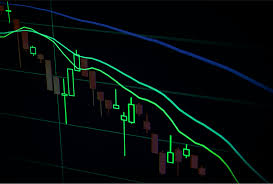Buy facet liquidity is essentially the supply of buyers available in the market who’re prepared and keen to purchase securities at numerous value levels. It reflects the demand side of the market and is a crucial factor in figuring out market prices. When there might be excessive purchase aspect liquidity, it means there are numerous buyers, which can drive up the price of securities.
Institutional trading impacts market mechanics by way of the introduction of large quantity trades and strategic placement of resting orders. Institutions often accumulate orders at crucial price points, thereby manipulating the currency’s supply and demand and driving market prices. Their activity can lead to price slippage and influence the general circulate of the Foreign Exchange markets, both on the purchase and sell facet. Liquidity in Forex serves because the bedrock upon which worth movements and buying and selling methods are based mostly.
Many retail traders tend to place buy stops just above this degree, expecting a breakout. Unlike counting on fundamental indicators, ICT focuses on understanding how establishments drive costs. Merchants can use purchase side liquidity by getting into trades close to liquidity zones, setting stop-loss orders strategically, and mixing liquidity evaluation with different technical indicators to substantiate buying and selling decisions. Merchants can establish buy side liquidity by analyzing swing highs and lows, recognizing liquidity zones, observing order blocks, conducting quantity analysis, and utilizing Fibonacci retracement levels.
Sellside Liquidity In Forex
These zones are usually found under support levels, swing lows, or clustered stop-loss areas. Institutional traders typically target these zones to generate liquidity for his or her purchase orders. It enables them to identify key market levels and deploy capital efficiently, contributing to higher total financial efficiency. Simple transactions are important when a lot of money is available, and interest rates are low. Several components, including financial indicators, monetary coverage, market sentiment, regulatory surroundings, and technological advancements, influence purchase facet liquidity. Institutional investors are key gamers in providing buy side liquidity, and their actions can significantly impact market dynamics.
This information will introduce you to the basics of order flow trading in easy, easy-to-understand phrases. You’ll discover ways to determine the place the big gamers are getting into and exiting the market, supplying you with a powerful edge in your trading. Its mix of sophisticated evaluation instruments, customizable features, and supportive community.
As an writer, I convey clarity to the complex intersections of know-how and finance. My focus is on unraveling the complexities of utilizing knowledge science and machine learning in the cryptocurrency market, aiming to make the rules of quantitative trading comprehensible for everybody. Managing buy-side liquidity presents each challenges and opportunities for buyers and market individuals.
- Purchase side liquidity refers to the availability of purchase orders out there at particular value levels.
- Establishments exploit BBL not only for cease hunts but additionally to assemble the quantity wanted to execute large promote orders with out causing excessive market disruption.
- The Operating Money Move Ratio juxtaposes a company’s working cash move towards its current liabilities.
- Liquidity is often measured using varied monetary ratios that present insights into a company’s monetary resilience and operational flexibility.
- These are fashioned below key help worth ranges, the place traders on the lengthy side of the market could have an interest in defending any latent draw back threat.
Rob is a funded trader from Toronto, Canada, and has been buying and selling currencies, commodities, shares, and cryptocurrencies for over 7 years. These indicators present where trading activity is concentrated, helping merchants pinpoint high-liquidity areas. Financial evaluation boards oversee and regulate market liquidity, ensuring a good marketplace for everybody concerned.
Institutional buying and selling entities exploit the accumulations of these orders strategically to direct the marketplace, making an advanced grasp of market mechanics an indispensable asset for the modern dealer. The dance between supply and demand grows more and more advanced with the involvement of large financial institutions that can create, shift, or absorb liquidity to initiate bullish or bearish value movements at will. Comprehending how these market makers operate opens the door to potentially predict, with greater accuracy, the dynamic rhythms of Forex. Buy aspect liquidity refers back to the availability of purchase orders in the market that could be stuffed by sell orders. It is a key area where institutional traders (smart money) target retail traders’ stop-losses and pending buy orders. These zones usually happen above important resistance ranges, swing highs, or psychological price levels.
These orders create a liquidity pool that establishments goal by driving prices upward to set off them. As Quickly As the stops are hit, establishments could reverse the price, capturing liquidity from retail merchants. For traders, understanding liquidity means gaining insight into the “why” behind price movements—an essential talent for aligning strategies with market realities. Liquidity influences not solely market dynamics but in addition the profitability of trades. In liquid markets, participants can enter and exit positions with minimal slippage, enabling environment friendly buying and selling. By applying the principles of buy aspect liquidity effectively and being aware of market conditions, merchants can navigate the complexities of the Forex and stock markets with larger confidence.
The introduction of high-frequency trading, algorithmic buying and selling, and different technological improvements has made it simpler for buyers to participate available in the market, thus enhancing buy aspect liquidity. Know-how has enabled faster and more environment friendly commerce executions, lowered transaction costs, and supplied entry to real-time market knowledge. These developments enable institutional and retail investors to react rapidly to market modifications, thereby rising general market liquidity. ICT is an method that strives to decipher the intricate dynamics of the markets, as properly as replicate the behaviour of astute institutional buyers. The integration and utility of ICT buying and selling ideas can deliver a substantial boost to a trader’s efficiency. ICT merchants monitor the market classes and search for particular times when buying and selling quantity is high enough to move prices quickly.
Buy Aspect Liquidity
ICT is a method that analyses the inside workings of the financial markets, particularly in Forex and crypto trading. This strategy was created by Michael J. Huddleston, an industry veteran with over 25 years of experience. Monitoring liquidity levels intently will enable an outline of the market structure buy side liquidity to be laid out, together with shifts in sentiment and potential turning points for trade selection. More typically than not, Fibonacci retracement and extension ranges establish the buy and sell facet areas close by that can equate to proportionate movements. Zones frequently see convergence with simple transferring averages weighted for different durations.
Influence On Value Actions:
Understanding purchase side liquidity is important for buyers, merchants, and market participants. It influences market prices, impacts trading strategies, and performs a pivotal function in the overall well being of monetary markets. By monitoring liquidity levels and the factors that impression them, stakeholders could make more informed decisions and navigate market fluctuations extra effectively. In the realm of trading, liquidity performs a crucial function in shaping market movements. One particular aspect, buy side liquidity, is particularly vital for merchants who use the Inside Circle Trading (ICT) methodology. Buy facet liquidity refers to the amount of demand from buyers at numerous value ranges and is important for understanding market dynamics.
This liquidity is the linchpin of environment friendly markets, hinging on the presence of sturdy resting orders that act as a buffer for clean value transitions. The capability to execute trades without undesirable disruption relies upon considerably on the way in which these orders are organized and work together within the various worth ranges. Buyside/Sellside Liquidity is an indicator that identifies buy-side and sell-side liquidity in real-time. Buy-side liquidity represents a stage on the chart the place short sellers will have their stops positioned. Sell-side liquidity represents a level on the chart the place long-buyers will place their stops.
This article delves into the idea of buy-side liquidity, its importance in Forex, and how it can be utilized successfully inside your trading strategies. By understanding these dynamics, you can also make more informed buying and selling choices and improve your general trading performance. Purchase aspect liquidity suppliers are the juggernauts of the Forex market, consisting of investment banks, pension funds, mutual funds, and different giant institutional buyers. These entities possess the capital clout and the market acumen to navigate vast oceans of orders, discreetly aligning their trading methods with present liquidity to shift market currents. Recognizing supply and demand dynamics and acknowledging the affect of institutional traders enhances traders’ confidence, significantly in hard-to-read markets.
These large entities have substantial capital to invest and infrequently interact in significant buying activity. In the world of finance, understanding market dynamics is essential for making informed funding decisions. This term might sound complex, nevertheless it plays a significant role in how markets function and the way costs are decided. In this text, we are going to delve into what purchase side liquidity is, how it operates, and its significance in market dynamics. Sell side liquidity zones emerge from the positions of merchants who have established long positions within an asset.





